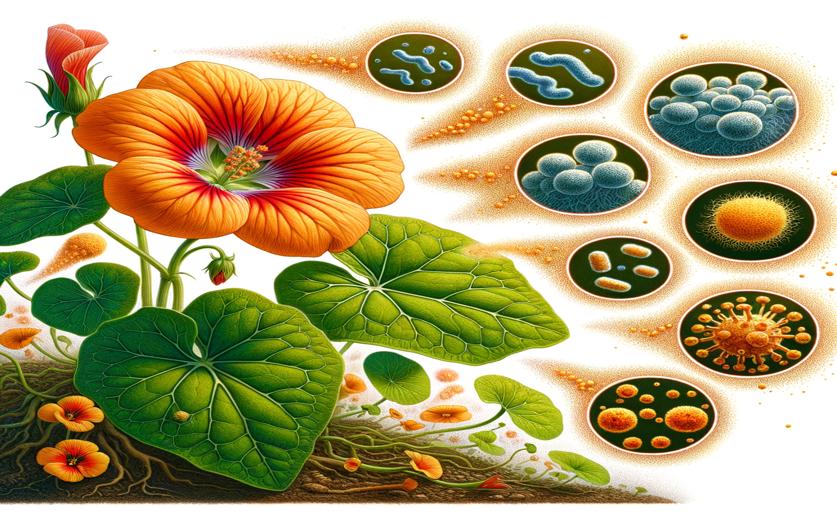
Fungal-Fighting Compounds Produced by Garden Nasturtium's Friendly Fungi
Jenn Hoskins
17th May, 2024

Image Source: Natural Science News, 2024
Key Findings
- Researchers at Vidyasagar University studied fungal endophytes from garden nasturtium for potential antifungal therapies
- The extract from Colletotrichum aenigma TML3 showed strong antifungal activity against Candida species, inhibiting biofilm formation and reducing virulence
- Volatile compounds from Curvularia lunata TML9 effectively inhibited plant pathogens, suggesting dual applications in agriculture and medicine
References
Main Study
1) Antifungal activity of bio-active cell-free culture extracts and volatile organic compounds (VOCs) synthesised by endophytic fungal isolates of Garden Nasturtium.
Published 16th May, 2024
https://doi.org/10.1038/s41598-024-60948-0
Related Studies
2) Antifungal drug development: challenges, unmet clinical needs, and new approaches.
3) Candida species: current epidemiology, pathogenicity, biofilm formation, natural antifungal products and new therapeutic options.
4) The antifungal pipeline: a reality check.



 18th February, 2024 | Jenn Hoskins
18th February, 2024 | Jenn Hoskins